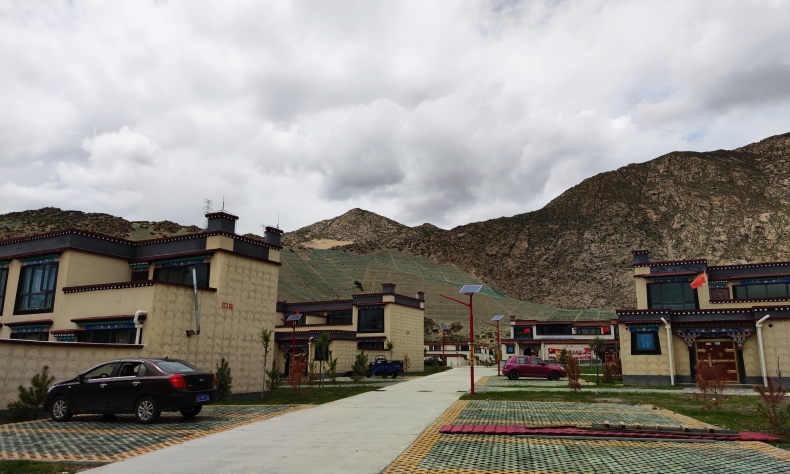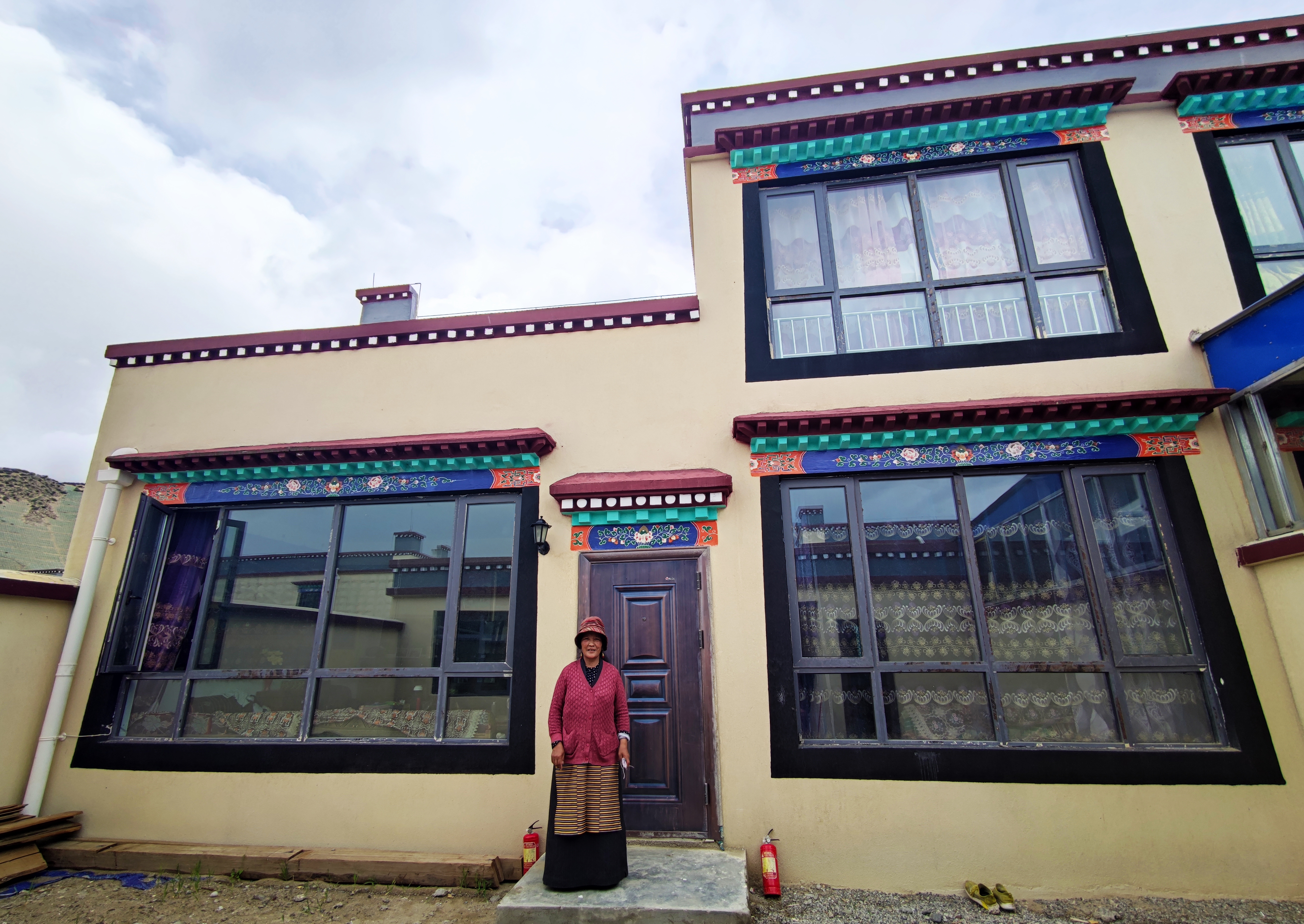Relocation: The First Step to Prosperity

Last year, 953 out of 975 relocation projects in Tibet Autonomous Region were finished, with more than 263 thousand rural dwellers entering their new homes.
Dechen was preparing to go to work as she smilingly welcomed guests into her new home. She had only recently moved into the new two-story house subsidized by the government, located hundreds of kilometers away from her old home in Nagqu prefecture, the largest prefecture in China’s Tibet Autonomous Region.
As they entered the room, their eyes were immediately drawn to the large tapestry depicting Potala Palace on the wall, placed beside some beautiful Tibetan calligraphy. “This is my son’s work,” Dechen said proudly, pointing at the calligraphy.
“Our life is far better than before,” Dechen said ingenuously. She is one of millions of impoverished rural residents who have been offered resettlement as part of a steadfast push to eliminate extreme poverty in the world’s most populous country.
In 2019, the rural poor population in China was reduced by 11.09 million, and the poverty headcount ratio fell to 0.6 percent, according to the government’s work report released in May. About ten million people who were registered as living in poverty are set to be relocated from inhospitable areas during China’s 13th Five-Year Plan period (2016-2020). As of last year, 9.3 million have already been resettled into new homes, with the relocation program in western fringes, including Tibet Autonomous Region, being placed high on the agenda.
Sea change in life
Last year, 953 out of 975 relocation projects in Tibet Autonomous Region were finished, with more than 263 thousand rural dwellers entering their new homes. Among these projects, the relocation of families from areas of extreme altitude have been some of the most eye-catching moves.
One such example is Nagqu, Dechen’s hometown, which is elevated on average 4,500 meters above sea-level. The resettlement plan has been welcomed by locals who had long been in desperate plight due to the high altitude. More than 30,000 citizens in Nagqu are expected to move to Sinpori village in Tibet’s Gonggar county, with 4,058 already resettled as of last October.
“We didn’t have abundant fresh vegetables and fruits in our diet before relocation. But now we have,” said Dechen, adding they used to drink water from wells, but now they have running water.
“It was so difficult for us to go to hospital. Our home was hundreds of kilometers away from the county’s hospital,” Dechen said. In addition, children who could previously only go home once every two or three weeks, are now able to return every weekend. And they don’t have to worry about power or communications outages anymore, or a lack of public services.
Equally important is their new found access to entertainment. In contrast to the few recreational activities in their previous home, Dechen can now chat with other villagers in the tea house, go shopping, or dance with other aunties in the main square of Sinpori village.

Connection to hometown
As far away as their old homes are, newcomers to Sinpori village still retain ties with their hometown. As most of them were herders, they still harbor a feeling of attachment to the grasslands, where they had pastured their yaks and sheep. Of course, yaks and sheep cannot be relocated like their owners, with livestock preferring meadows at higher altitudes.
To make their pasture more cost-effective, the local government in Dechen’s hometown established a cooperative where herders can buy shares with their yaks and receive dividends by the end of the year. At the same time, herders can work for the cooperative and get paid accordingly. They can also find other work near their new homes when their pastures aren’t busy, adding a new source of income for themselves.
“(There are) Many changes. The thing that didn’t and won’t change is we can still have our own yak meat, yak butter, and yak milk,” Dechen said contentedly. “Our diet is healthier than before.”
The environment in their hometown is also healthier. In high-altitude areas of Tibet Autonomous Region, there are nine natural reserves, which, unfortunately, are inhabited by more than 80,000 people. As a result, ineluctable conflicts occur between farmers, livestock and wildlife when confronted with limited land. The relocation program will surely contribute to creating harmony between man and nature there.
“Now my husband is working at the pasture,” Dechen said, “it is time for shearing.” Herders go back to their hometown every season and more frequently when yaks need them most, meaning the bond between them and their hometown has not been weakened by their relocation.
More than relocation
“I am a cleaner for the clinic. Every month I get 1,700 yuan,” Dechen said.
The clinic is one of the newly-built public facilities in Sinpori village, along with a new school, kindergarten, grocery stores, high street stores, police station, public toilet, gasoline station, all built just before their resettlement. All these projects have brought job opportunities to their new residents and thus supplemented their income.
Although some jobs may disappear, others have been built to last. A 66.7-hectare orchard has been established, with 63.3 hectares planted with apple trees and the rest used for greenhouses. More than 58.9 million yuan has been invested in this cash crop project, which has generated more than 3,000 jobs and brought additional income of 507,000 yuan.
As more of the population will be resettled here, the community is planning to build an industrial park covering an area of 25 square kilometers to process dairy produce and animal by-products. It is not hard to imagine people like Dechen will live a better life over the next few years.
“No, there is nothing I am unhappy with”, Dechen said, when asked if she had any complaints.
 Facebook
Facebook
 Twitter
Twitter
 Linkedin
Linkedin
 Google +
Google +










